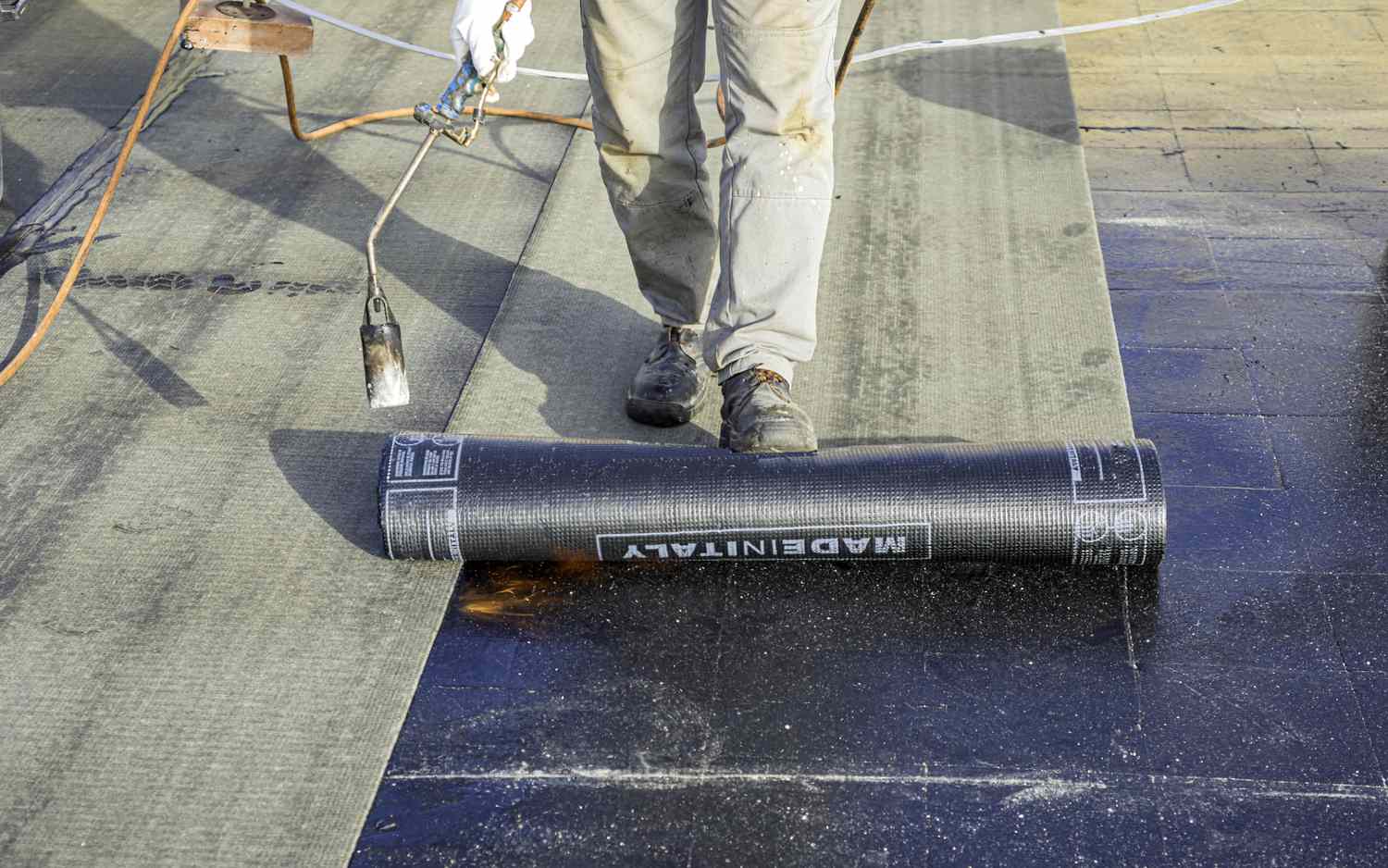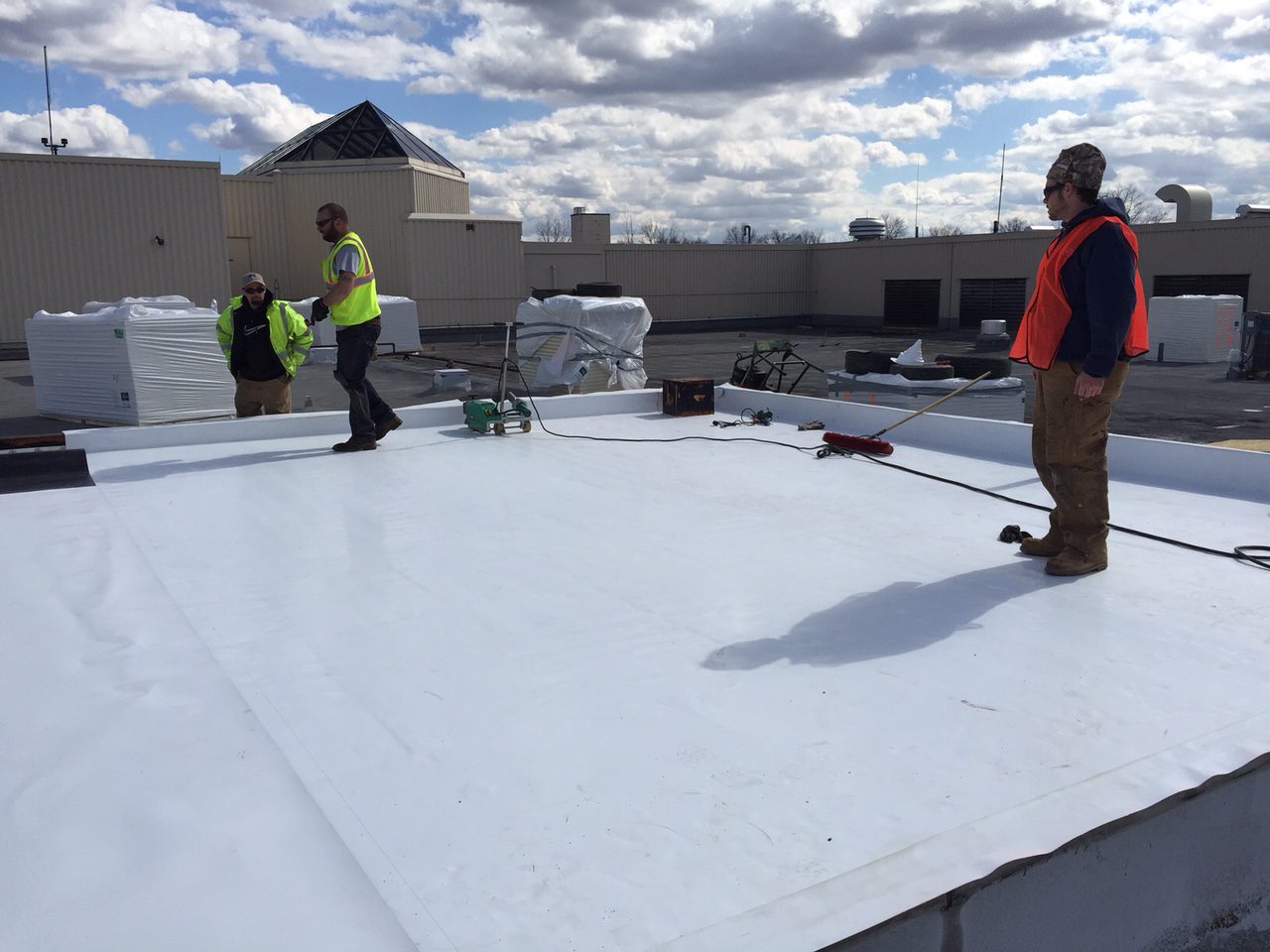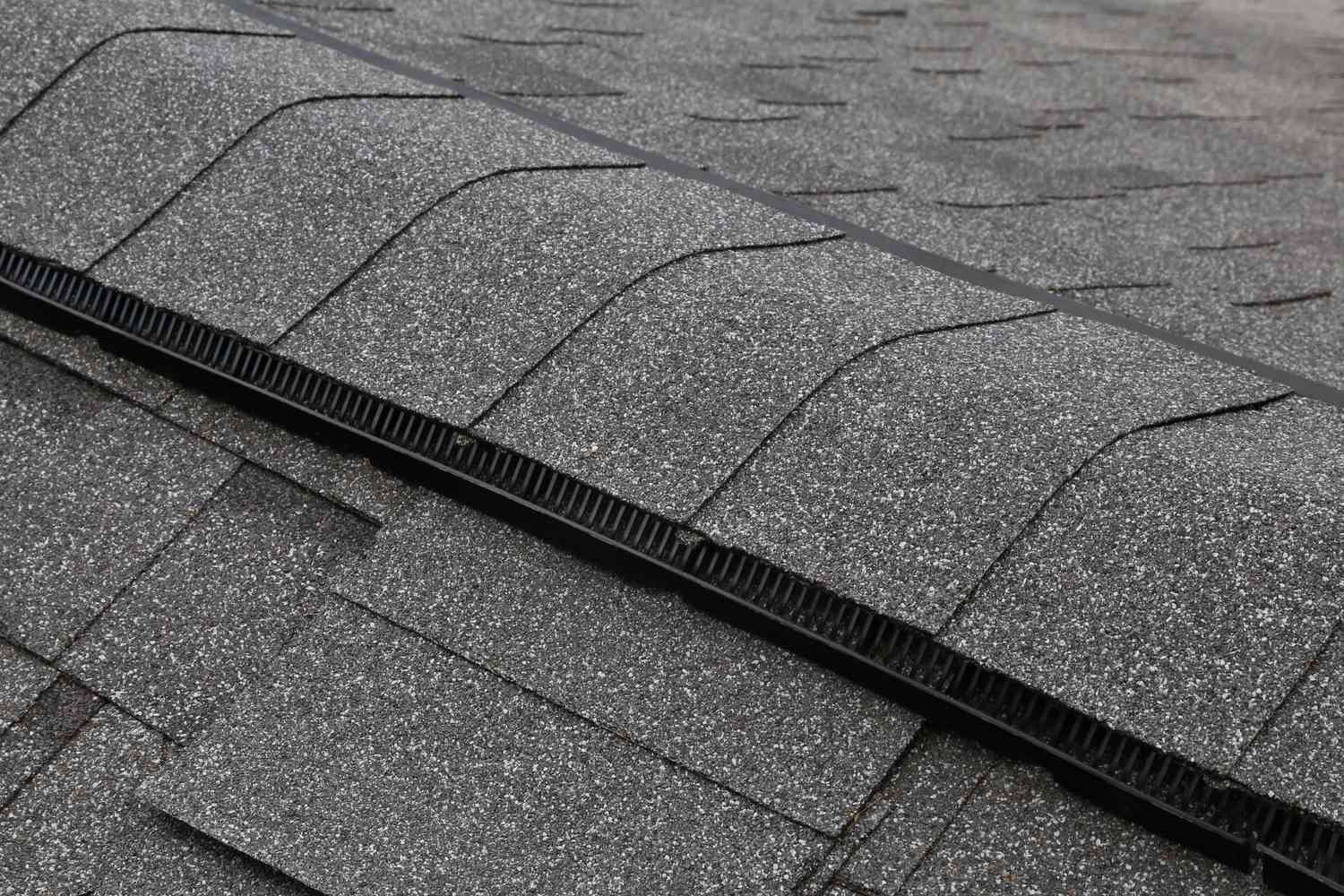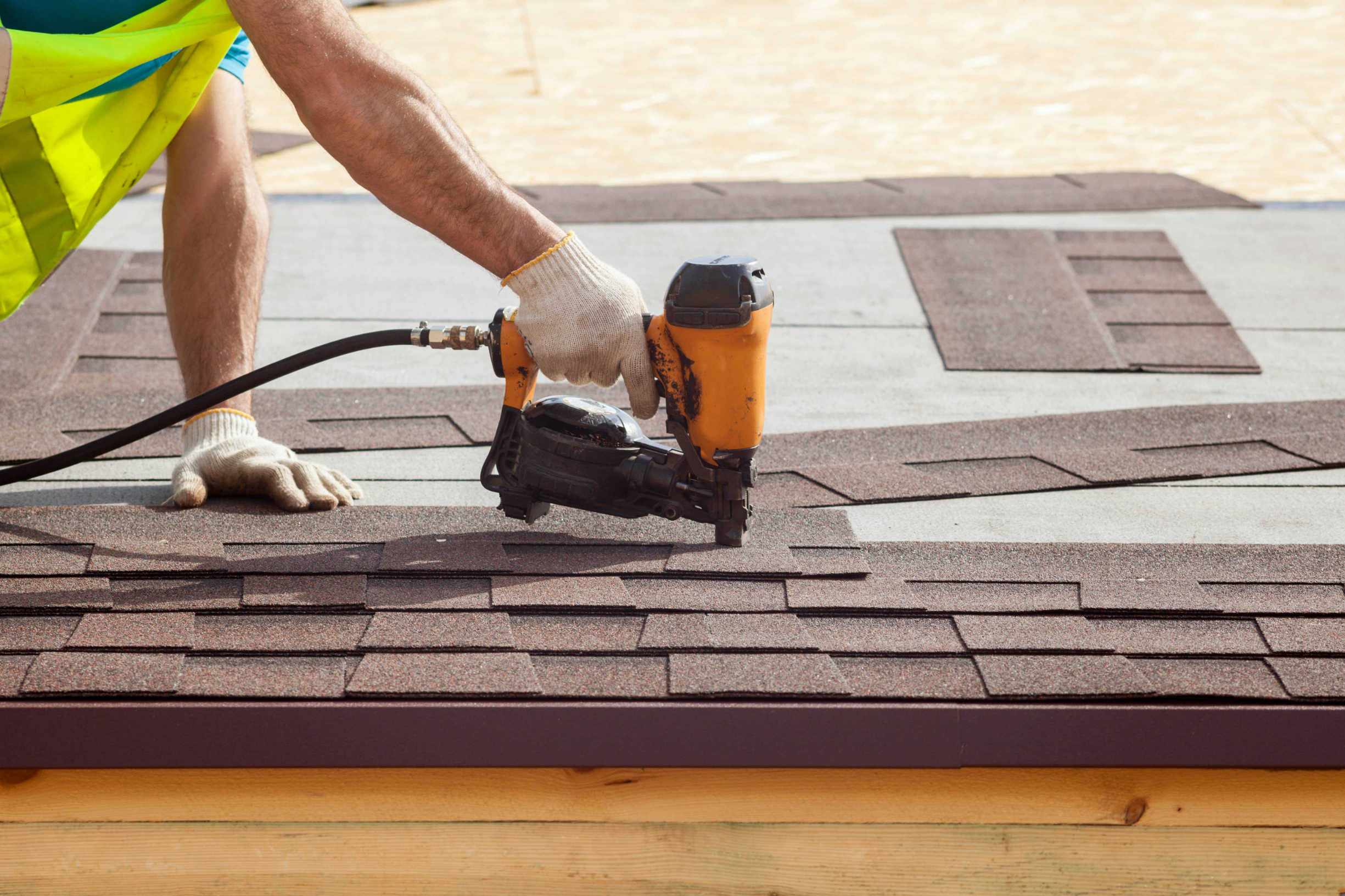

Articles
What Is A Rolled Roof
Modified: February 24, 2024
Learn about rolled roofs and how they can be a cost-effective and durable option for your home. Find informative articles on installation, maintenance, and benefits of rolled roofs.
(Many of the links in this article redirect to a specific reviewed product. Your purchase of these products through affiliate links helps to generate commission for Storables.com, at no extra cost. Learn more)
Introduction
Welcome to the world of rolled roofs, where practicality meets functionality. A rolled roof is a type of roofing system that offers durability and ease of installation. Ideal for low-slope or flat roofs, it is a cost-effective option that provides adequate protection against the elements.
In this article, we will delve into the world of rolled roofs, exploring their definition, components, types of materials used, installation process, advantages, disadvantages, cost, and maintenance. Whether you’re a homeowner looking for a roofing solution or a DIY enthusiast eager to learn about different roofing options, this comprehensive guide will offer valuable insights.
When it comes to roofing, understanding the basics is crucial. Your roof serves as the first line of defense against various weather conditions, including rain, snow, wind, and sunlight. Therefore, choosing the right roofing material is essential in ensuring the longevity and functionality of your roof.
A rolled roof is a roofing system that uses large rolls of material to cover the roof surface. It is typically composed of a base layer, reinforcement layer, and a top coating. This combination of layers provides a flexible and durable barrier that can withstand environmental stressors.
Now that we have established a basic understanding of rolled roofs, let’s dive deeper into each component and explore the different types of materials used in their construction.
Key Takeaways:
- Rolled roofs offer a cost-effective and practical solution for low-slope or flat roofs, with easy installation, durability, and a variety of material options to suit different budgets and project requirements.
- Regular maintenance, including inspections, debris removal, addressing ponding water, and seeking professional maintenance when necessary, is crucial for maximizing the lifespan and performance of a rolled roof.
Read more: How To Install Roll Roofing
Definition of a Rolled Roof
A rolled roof, also known as a roll roofing or a peel-and-stick roof, is a type of roofing system that is designed for low-slope or flat roofs. It consists of large rolls of material that are rolled out and laid flat to cover the roof surface. Unlike traditional roofing materials such as shingles or tiles, rolled roofs come in long, continuous rolls, making them easier to install and more cost-effective.
One of the key features of a rolled roof is its simplicity. It is made up of three main layers: the base layer, the reinforcement layer, and the top coating. The base layer provides the foundation for the roof, offering waterproofing and adhesion to the roof surface. The reinforcement layer, typically made of polyester or fiberglass, adds strength and stability to the roof. Finally, the top coating, often made of asphalt or a synthetic material, protects the underlying layers from UV rays, water, and other environmental elements.
One of the main advantages of a rolled roof is its ease of installation. Unlike traditional roofing materials that require individual tiles or shingles to be placed and nailed down, rolled roofs can be rolled out and adhered to the roof surface using adhesive or heat. This makes them a popular choice for DIY enthusiasts or contractors looking for a quick and efficient roofing solution.
It is important to note that rolled roofs are typically used for low-slope or flat roofs. They are not suitable for roofs with steep slopes as the materials used may not provide adequate water drainage. Additionally, rolled roofs are often used as a temporary roofing solution or for structures such as sheds, garages, or outbuildings.
Now that we have a clear understanding of what a rolled roof is, let’s explore the components that make up this roofing system.
Components of a Rolled Roof
A rolled roof is composed of several key components that work together to provide a durable and weather-resistant roofing system. Understanding these components is essential in ensuring the proper installation and functionality of a rolled roof. Let’s take a closer look at each component:
-
Base Layer:
The base layer is the foundation of a rolled roof. It is typically made of asphalt-saturated organic felt or a synthetic material like fiberglass. The base layer serves as a waterproofing barrier, preventing water from penetrating the underlying layers and causing damage to the roof structure. It also provides a surface for the reinforcement and top coating layers to adhere to.
-
Reinforcement Layer:
The reinforcement layer is an essential component that adds strength and stability to the rolled roof. It is often made of polyester or fiberglass material, which helps to prevent tearing or splitting of the roof’s surface. The reinforcement layer provides additional durability and gives the roof the ability to withstand various weather conditions and environmental stressors.
-
Read more: What Is A Roof
Top Coating:
The top coating is the final layer of the rolled roof. It is responsible for protecting the underlying layers from UV rays, moisture, and other external elements. The top coating is typically made of asphalt or a synthetic material and provides a smooth, weather-resistant surface. It also helps to enhance the overall appearance of the roof.
-
Adhesive or Heat-Activated Sealant:
To ensure proper adhesion and sealing of the rolled roof, an adhesive or heat-activated sealant is used. This component helps to secure the layers of the roof together, creating a watertight seal. The type of adhesive or sealant used will depend on the specific rolled roof system and manufacturer’s recommendations.
These components work in harmony to create a strong and effective rolled roof system. The base layer provides waterproofing, the reinforcement layer adds strength, the top coating offers protection, and the adhesive or sealant ensures a secure and tight bond between the roof layers.
Now that we understand the components that make up a rolled roof, let’s explore the different types of materials used in rolled roofing systems.
Types of Rolled Roofing Materials
When it comes to rolled roofing, there are several types of materials that are commonly used. Each material has its own unique properties and advantages. Let’s explore the most common types of rolled roofing materials:
-
Asphalt Roll Roofing:
Asphalt roll roofing, also known as organic felt or felt paper, is one of the most popular options for rolled roofing. It consists of a base layer made of organic felt that is saturated with asphalt to provide waterproofing and durability. Asphalt roll roofing is relatively affordable and easy to install, making it a popular choice for small structures such as sheds, garages, and porches.
-
Read more: What Is A Roof Soffit
Fiberglass Roll Roofing:
Fiberglass roll roofing is another common choice for rolled roofs. It is made of a base layer composed of fiberglass material, which offers excellent strength and durability. Fiberglass roll roofing is resistant to UV rays, fire, and moisture, making it a long-lasting option for both residential and commercial buildings.
-
Modified Bitumen Roll Roofing:
Modified bitumen roll roofing is a more advanced type of rolled roofing material. It is made of a base layer of asphalt or synthetic materials, enhanced with modifiers like rubber or plastics for increased flexibility and strength. Modified bitumen roll roofing offers superior protection against harsh weather conditions and can be applied with adhesive or heat activation.
-
EPDM (Ethylene Propylene Diene Monomer) Roofing:
EPDM roofing is a synthetic rubber roofing material that is commonly used for flat or low-slope roofs. It comes in large rolls and is highly resistant to UV rays, ozone damage, and extreme temperatures. EPDM roofing is known for its durability and longevity, often lasting up to 40 years or more with proper maintenance.
-
TPO (Thermoplastic Olefin) Roofing:
TPO roofing is a thermoplastic membrane roofing material that is becoming increasingly popular for rolled roofs. It is made of a single-ply membrane and offers excellent resistance to UV rays, chemicals, and punctures. TPO roofing is energy-efficient and can help reduce heating and cooling costs.
These are just a few examples of the most common types of rolled roofing materials available in the market. The choice of material will depend on factors such as budget, climate conditions, and specific project requirements. It is always recommended to consult with a roofing professional to determine the most suitable material for your specific needs.
Now that we have explored the different types of rolled roofing materials, let’s move on to understanding the installation process of a rolled roof.
Read more: What Is A Parapet Roof
Installation Process of a Rolled Roof
The installation process of a rolled roof may vary slightly depending on the specific material being used. However, the general steps outlined below will give you an overview of the process involved:
-
Prepare the Roof Surface:
The first step in the installation process is to prepare the roof surface. This involves ensuring that the roof is clean, free of debris, and in good condition. Any existing roofing materials, such as shingles or tiles, should be removed or properly covered before proceeding.
-
Install the Underlayment:
The next step is to install an underlayment on the roof surface. This provides an additional layer of waterproofing and acts as a barrier between the rolled roofing material and the roof structure. Depending on the specific material being used, the underlayment may be self-adhering or require an adhesive to secure it in place.
-
Roll Out and Cut the Rolls:
Once the underlayment is in place, it’s time to roll out the roofing material. Measure and cut the rolls to fit the dimensions of the roof, allowing for a slight overhang at the edges. Use a utility knife or roofing scissors to ensure clean and precise cuts.
-
Read more: What Is A Roof Shingle
Adhere the Rolls:
After cutting the rolls to the appropriate size, it’s time to adhere them to the roof surface. Apply an adhesive or use a heat-activated sealant as recommended by the manufacturer. Start at one end of the roof and gradually unroll the roofing material, pressing it firmly onto the roof surface as you go.
-
Seal the Seams and Edges:
Once the roofing material is in place, seal the seams and edges to ensure a watertight seal. This can be done using a compatible adhesive, heat activation, or by applying a specific sealant designed for the material being used. Be sure to follow the manufacturer’s instructions carefully.
-
Inspect and Clean Up:
After the installation is complete, thoroughly inspect the rolled roof for any visible defects or areas that may require additional attention. Clean up any debris or excess material from the installation process, and ensure that the roof is in good condition before considering the installation complete.
It’s important to note that the installation process may require specialized tools and equipment, and it’s always recommended to consult with a professional roofer or refer to the manufacturer’s guidelines to ensure proper installation and avoid any potential issues.
Now that we understand the installation process of a rolled roof, let’s explore the advantages and disadvantages of using this type of roofing system.
Advantages of a Rolled Roof
Choosing a rolled roof for your building or structure comes with several advantages. Let’s explore the benefits of using this type of roofing system:
-
Read more: What Is A Roof Purlin
Cost-effective:
One of the significant advantages of rolled roofing is its affordability. Rolled roofs are generally less expensive compared to other roofing options such as shingles or tiles. The cost savings extend not only to the materials themselves but also to the installation process, which is often quicker and requires less labor.
-
Easy Installation:
Roll roofing is relatively easy to install, making it a popular choice for DIY enthusiasts. Its large rolls can be rolled out and adhered to the roof surface using adhesive or heat activation. This simplicity of installation can save time and money, especially for small roofing projects or temporary structures.
-
Good for Low-Slope Roofs:
Rolled roofing is an ideal option for low-slope or flat roofs. Its flexibility allows it to conform to the contours of the roof surface, creating a seamless and watertight barrier. Rolled roofs provide effective protection against water infiltration, thereby minimizing the risk of leaks and structural damage.
-
Durability:
Most rolled roofing materials are designed to be durable and resistant to various weather conditions. They can withstand exposure to UV rays, moisture, and thermal expansion and contraction. With proper installation and regular maintenance, a rolled roof can have a long lifespan, providing years of reliable protection for your building.
-
Read more: What Is A Gable On A Roof?
Variety of Materials:
Rolled roofing systems come in various materials, allowing you to choose the one that best suits your needs. Whether it’s asphalt, fiberglass, modified bitumen, EPDM, or TPO, there is a wide range of options available to accommodate different budgets, climates, and building requirements.
These advantages make rolled roofing a practical and cost-effective solution for a variety of roofing needs. However, it’s important to consider the disadvantages of rolled roofs as well to make an informed decision. Let’s explore the potential drawbacks.
Disadvantages of a Rolled Roof
While rolled roofing offers several advantages, it is important to also consider the potential disadvantages of using this type of roofing system. Let’s explore some of the drawbacks:
-
Shorter Lifespan:
Compared to other roofing materials such as shingles or tiles, rolled roofing generally has a shorter lifespan. The average lifespan of a rolled roof is around 10 to 15 years, depending on the material used and the climate conditions. Regular maintenance and inspections are necessary to ensure its longevity.
-
Limited Aesthetic Options:
Rolled roofing is primarily used for functional purposes rather than aesthetics. It often has a plain and utilitarian appearance, which may not be visually appealing for some homeowners or building owners. If aesthetics are a significant concern, other roofing materials might offer a wider range of design options.
-
Read more: What Are The Rolls Of Grass Called
Not Suitable for Steep Slopes:
Rolled roofing is designed for low-slope or flat roofs and is not recommended for steep-slope applications. The material may not provide sufficient water drainage on steep slopes, leading to water pooling and potential leaks. It is essential to consult with a roofing professional to determine the most suitable roofing material for your specific slope requirements.
-
Limited Weather Resistance:
While rolled roofs are designed to withstand various weather conditions, they may not be as durable as other roofing materials in extreme climates. Harsh weather elements such as hail, strong winds, or heavy snow loads can potentially damage the rolled roofing material. Regular inspections and timely repairs are necessary to ensure its weather resistance.
-
Professional Installation Recommended:
Although rolled roofing can be installed by DIY enthusiasts, it is recommended to have it installed by a professional roofer. Proper installation is crucial to achieve its maximum performance and longevity. Inexperienced installation can lead to mistakes, which may compromise the effectiveness of the roofing system.
Considering these potential drawbacks will help you make an informed decision when it comes to choosing the right roofing system for your building. It is important to weigh the advantages and disadvantages based on your specific needs, budget, and the requirements of your structure.
Now that we have explored the advantages and disadvantages of a rolled roof, let’s discuss the cost considerations associated with this type of roofing system.
Cost of a Rolled Roof
The cost of a rolled roof can vary depending on factors such as the type of material used, the size and complexity of the roof, and the region where the installation takes place. While rolled roofing is generally known for its affordability, it is important to consider these cost considerations:
-
Read more: What Is A Membrane Roof
Material Cost:
The cost of rolled roofing materials can vary significantly depending on the type of material chosen. Asphalt roll roofing is the most affordable option, while materials such as modified bitumen or EPDM tend to be slightly more expensive. It is important to factor in the cost of the specific material required for your project.
-
Installation Labor:
The labor cost associated with installing a rolled roof will depend on factors such as the complexity of the roof, the accessibility of the installation site, and the experience level of the roofing contractor. Hiring a professional roofer to install a rolled roof is recommended to ensure proper installation and maximize its performance. Labor costs can vary, so it is advisable to obtain multiple quotes from reputable contractors.
-
Additional Materials and Accessories:
In addition to the roofing material and labor costs, there may be additional expenses for underlayment, adhesive, sealants, flashing, and other accessories required for the installation of a rolled roof. These costs should be considered in the overall budget for the project.
-
Roof Size and Complexity:
The size and complexity of the roof will also impact the overall cost. Larger roofs will require more materials and longer installation time, leading to higher costs. Additionally, roofs with multiple angles, ridges, or penetrations may require additional labor and materials, which can increase the overall cost of the rolled roof installation.
-
Read more: What Are The Eaves Of A Roof?
Geographical Location:
The geographical location of the installation site can also influence the cost of a rolled roof. Factors such as local material availability, labor costs, and permitting requirements can vary from one region to another. It is advisable to research and gather local cost estimates to get a better understanding of the pricing in your area.
It is important to obtain quotes from reputable roofing contractors and consider multiple factors when budgeting for a rolled roof installation. While the cost of a rolled roof is generally more affordable compared to other roofing options, careful consideration should be given to ensure a balance between quality, durability, and budget constraints.
Now that we have discussed the cost considerations, let’s move on to understanding the maintenance requirements of a rolled roof.
Maintenance of a Rolled Roof
Maintaining a rolled roof is crucial to ensure its longevity and optimal performance. While rolled roofing systems are known for their durability, regular maintenance can help identify and address any issues before they worsen. Here are some important maintenance tips to keep in mind:
-
Regular Inspections:
Perform regular inspections of your rolled roof to check for any signs of damage or wear. Look for signs of cracks, tears, or blisters in the roofing material, as well as any loose or damaged flashing around vents, chimneys, or other roof penetrations. Regular inspections will allow you to identify and address issues promptly.
-
Clean Debris:
Keep the roof surface clear of any debris such as leaves, branches, or dirt. Debris can trap moisture and prevent proper water drainage, leading to potential damage and deterioration of the rolled roof. Regularly remove debris using a broom or blower, taking care not to damage the roofing material.
-
Read more: What Is Sheathing On A Roof
Address Ponding Water:
If you notice any areas of ponding water on your rolled roof, take action to improve drainage. Pooling water can lead to leaks and possible structural damage over time. Consult with a roofing professional to determine the best solution, which may involve regrading the roof or adding additional drainage systems.
-
Check Seams and Edges:
Inspect the seams and edges of the rolled roof for any signs of separation or lifting. Over time, these areas may become vulnerable to water infiltration. If you notice any issues, apply an appropriate sealant or adhesive to ensure a secure and watertight seal.
-
Trim Overhanging Branches:
If there are any tree branches overhanging your rolled roof, trim them regularly. Overhanging branches can scrape or damage the roofing material, potentially leading to leaks and other issues. Trim branches carefully, or consider hiring a professional tree service for safe and proper pruning.
-
Professional Maintenance:
Occasionally, it is recommended to have a professional roofing contractor inspect and maintain your rolled roof. They can provide a more in-depth assessment, identify any hidden issues, and perform necessary repairs or maintenance tasks to ensure the continued performance and longevity of your rolled roof.
By following these maintenance practices, you can extend the lifespan of your rolled roof and minimize the risk of costly repairs or replacements. Regular inspections, cleaning, and prompt maintenance are key to keeping your rolled roof in optimal condition.
Now that we have covered the maintenance aspect, let’s conclude our exploration of rolled roofs.
Read more: What Is A Rake On A Roof
Conclusion
In conclusion, a rolled roof is a practical and cost-effective option for low-slope or flat roofs. With its easy installation process, durability, and affordability, it offers several advantages for homeowners and building owners. Rolled roofing materials such as asphalt, fiberglass, modified bitumen, EPDM, and TPO provide a range of options to suit different budgets, climates, and project requirements.
However, it’s important to consider the potential disadvantages of rolled roofs, such as their shorter lifespan, limited aesthetic options, and the need for professional installation in some cases. Understanding these factors allows for informed decision-making when selecting the right roofing system for your structure.
Maintenance plays a vital role in maximizing the lifespan and performance of a rolled roof. Regular inspections, debris removal, addressing ponding water, checking seams and edges, trimming overhanging branches, and seeking professional maintenance when necessary will all contribute to the longevity and durability of your rolled roof.
When considering the cost of a rolled roof, material costs, installation labor, additional materials and accessories, roof size and complexity, as well as the geographical location, should all be taken into account. Obtaining quotes from reputable roofing contractors and carefully budgeting for the project will help ensure a balance between quality and affordability.
In conclusion, a rolled roof offers a cost-effective and practical solution for low-slope or flat roofs. With proper installation, regular maintenance, and attention to the specific needs of your structure, a rolled roof can provide years of reliable protection against the elements.
We hope this comprehensive guide has provided you with valuable insights into rolled roofs, their components, types of materials, installation process, advantages, disadvantages, cost considerations, and maintenance requirements. Should you decide to explore a rolled roof for your roofing needs, remember to consult with roofing professionals and adhere to manufacturer guidelines for the best results.
Thank you for joining us in this journey through the world of rolled roofs!
Frequently Asked Questions about What Is A Rolled Roof
Was this page helpful?
At Storables.com, we guarantee accurate and reliable information. Our content, validated by Expert Board Contributors, is crafted following stringent Editorial Policies. We're committed to providing you with well-researched, expert-backed insights for all your informational needs.





0 thoughts on “What Is A Rolled Roof”